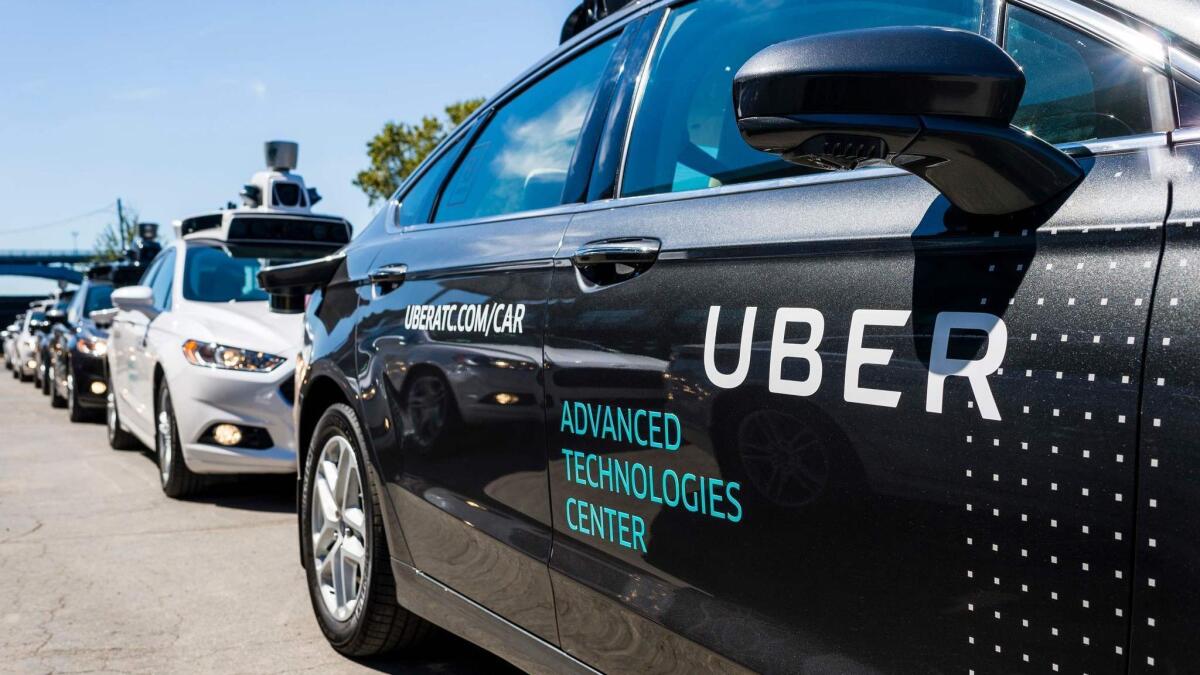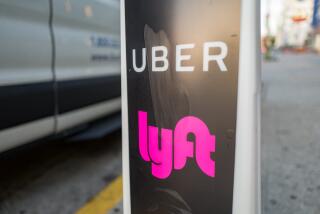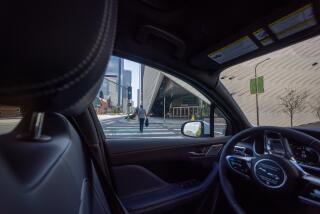Could driverless cars cause more congestion in urban cores?

- Share via
As the era of driverless cars looms, a new Boston-based study suggests the vehicles may increase traffic congestion in cities’ downtown areas as more people embrace ride-hailing services and abandon transit.
The same study also found, however, that driverless vehicles could dramatically improve traffic conditions in the suburbs.
The study by the World Economic Forum and the Boston Consulting Group is based on a simple premise, backed by 10 months of research and one of the most specific surveys done on autonomous cars: As the cost of using services such as Uber and Lyft falls because the companies no longer need to pay drivers, people who now take mass transit will instead opt for door-to-door service rather than the bus or subway.
“If it’s the same price or only slightly more, plus I don’t have to walk to the station, I don’t have to worry about carrying an umbrella, I don’t have to check schedules, I don’t have to connect, why would anyone take the train?” said Augustin Wegscheider, one of the report’s authors.
Why might that cause 5.5% more congestion in downtown Boston? Because raid-hailing fleet vehicles will begin to replace private cars.
“You might have fewer vehicles on the road, but the vehicles that are on the road are operating 12 hours a day,” Wegscheider said.
The study underscores, he said, “that unless you put the right policies in place to actively manage the adoption of [autonomous vehicles], congestion might actually get worse.”
The answer there, the study says, is that those policies must encourage people to share autonomous vehicles provided by ride-hailing companies.
“One of the answers is getting more people in the car,” Wegscheider said. “If you ask consumers, ‘Would you do that?’ they say, ‘Hell, no, I’m not going to share a car with strangers,’ but if it costs $2 instead of $7, they say, ‘OK.’ ”
The situation will be very different in most suburbs, the study found, where ride-hailing services “will mainly replace the use of personal cars rather than mass transit, and travel time will decrease by 12.1%.”
“There, the trade-off is instead of sitting in traffic for a 10-mile trip and dealing with it myself and paying $30 for parking in the city every day, I could invest those $30 in the ride service and use the time productively,” Wegscheider said.
And unlike city dwellers, suburban commuters who use mass transit are not expected to opt for a ride-hailing service even if the cost of hailing a ride drops significantly.
“If I take the train for an hour now for $6, even if the Lyft price comes down from $80 to $40 [for the same trip], it’s still a trade-off between $40 and $6,” he said. “People will still ride the train.”
The study also found that the advent of autonomous cars has much broader acceptance in congested cities abroad than it does in the United States, where a deeply rooted car culture engenders skepticism about relinquishing the steering wheel.
The report surveyed 5,500 drivers in 27 cities around the world, finding that slightly more than half of Americans said they want to ride in a driverless car. In two counties where the number of cars has skyrocketed in recent years — China and India — 75% to 85% of people said they would welcome autonomous vehicles.
The difference, Wegscheider said, is that the United States has a much more established car culture.
“Some people would go from walking or mainly riding a bike to an autonomous vehicle,” he said, “rather than a person who grew up in the suburbs of Detroit who says, ‘I’ve been driving all my life.’ ”
Wegscheider says he is distrustful of many surveys about whether people are ready to embrace driverless cars.
“You can Google a study that says 80% of people are scared of [autonomous vehicles], and you can just as easily find a study that says 80% of people are excited about [autonomous vehicles]. I find neither of those mean anything,” he said. “We tried to make it, in these very specific situations: ‘You’re going to work, it’s a 10-mile trip, you’re traveling by yourself at 7 a.m., it’s raining, you have these eight options at the following costs and the following trip experience. Which one do you take?’ ”






